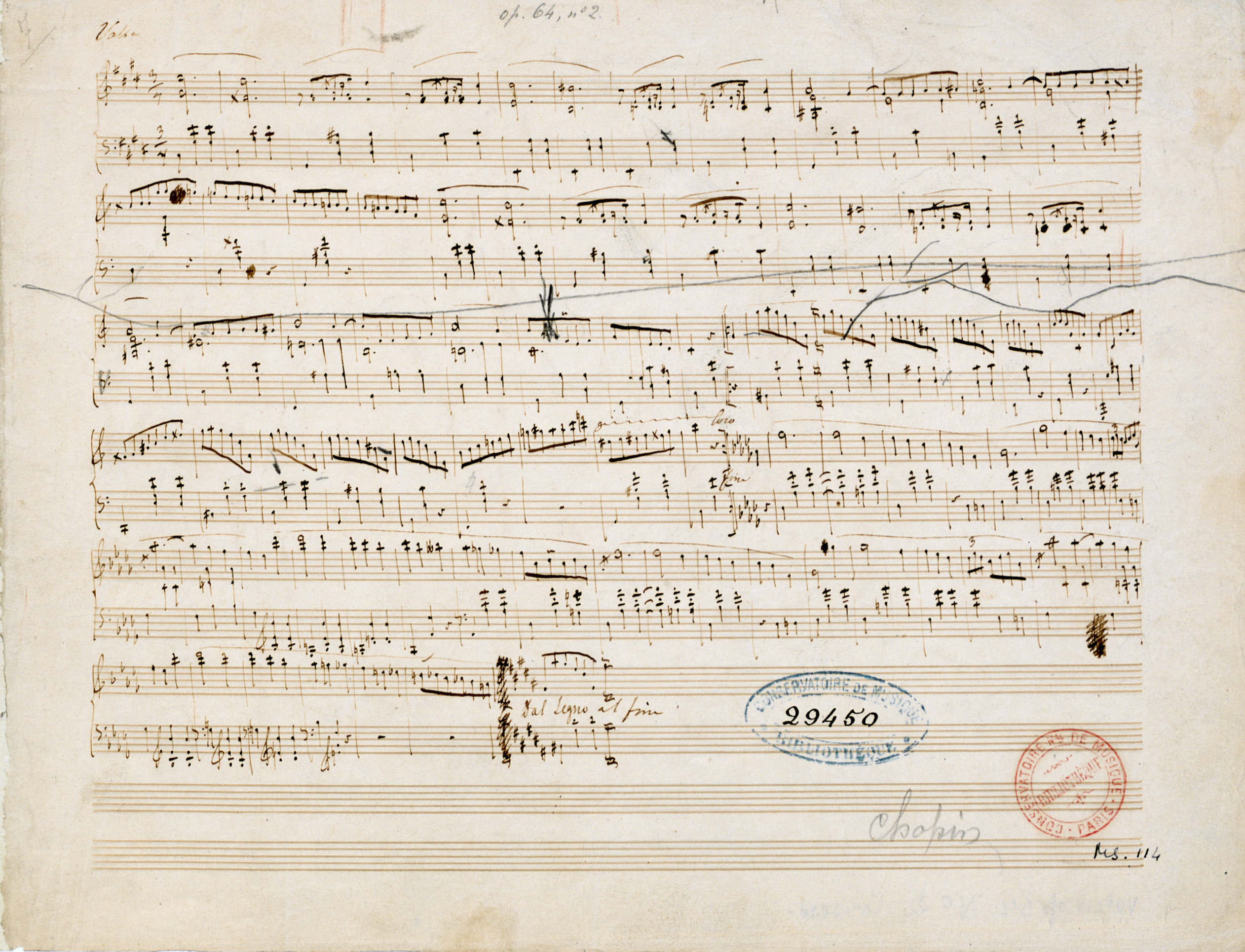Op. 2, Variations in B♭ major
Op. 10, 12 Etudes
Op. 11, Concerto in E minor
Op. 21, Concerto in F minor
Op. 22, Polonaise in E♭ major
Op. 24, 4 Mazurkas
Op. 25, 12 Etudes
Op. 26, 2 Polonaises
Op. 27, 2 Nocturnes
Op. 28, 24 Preludes
Op. 30, 4 Mazurkas
Op. 35, Sonata in B♭ minor
Op. 50, 3 Mazurkas
Op. 63, 3 Mazurkas
Op. 64, 3 Waltzes
(Op. 4), Sonata in C minor




Op. 64 No 2, Waltz in C♯ minor
The slurring of AI, in the same way as in bars 65-72, is related to the regular four- and eight-bar structure of the phrases – one slur ends on the last quaver in bar 80, whereas the next one begins from the minim in bar 81. The slurring of A corresponds to the moved, more freely shaped phrases. In fact, the first slur does not go beyond bar 80, yet its shape clearly suggests leading it to a 1 in bar 81. This is how it was interpreted in FE and in the remaining editions; these are also the slurs we give in the main text. Since both authentic slurrings are clearly linked to the rhythmic structure of the phrases, corresponding variants are included in the next note on rhythm.
1 in bar 81. This is how it was interpreted in FE and in the remaining editions; these are also the slurs we give in the main text. Since both authentic slurrings are clearly linked to the rhythmic structure of the phrases, corresponding variants are included in the next note on rhythm.
Compare the passage in the sources »
category imprint: Graphic ambiguousness; Differences between sources; Corrections & alterations
issues: Inaccurate slurs in A
notation: Slurs

